Hilda's Familiars - GBJam Devlog
For GBJAM 12, we built Hilda's Familiars, a game about managing a witchy familiar shop. Here's a short look behind the scenes of its development.
Inspiration
As you can tell from our team name, we're big fans of witches. In fact, our previous GBJAM entry was a witch dating sim. Once we heard that the theme for this year's GBJAM was "spooky", we knew witches would be involved somehow! After some brainstorming, we landed on an idea about fulfilling witches' requests for magical familiars.
Our main inspiration was a game we played as children: Fripple Shop from Thinkin' Things 1, a 1993 PC game for kids. Customers would come to the shop and request a "Fripple" with certain qualities. This game made a big impression on us in our formative years, so it was fun to put our own spin on the idea for this jam.
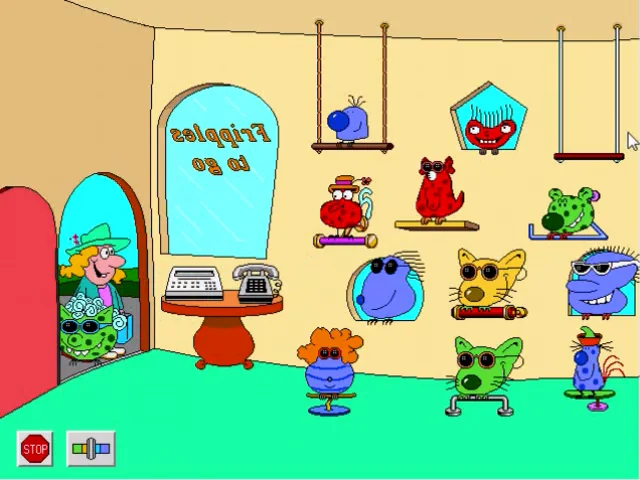
The visuals were inspired by classic GameBoy/GBC games such as Dragon Warrior Monsters - a favorite of ours featuring lots of monster sprites. As we developed the gameplay, it ended up sharing some similarities to Wilmot's Warehouse, a modern indie game about organizing a warehouse to fulfill customers' orders. (If you felt the urge to organize your familiars in Hilda's Familiars, I highly recommend Wilmot's Warehouse!)
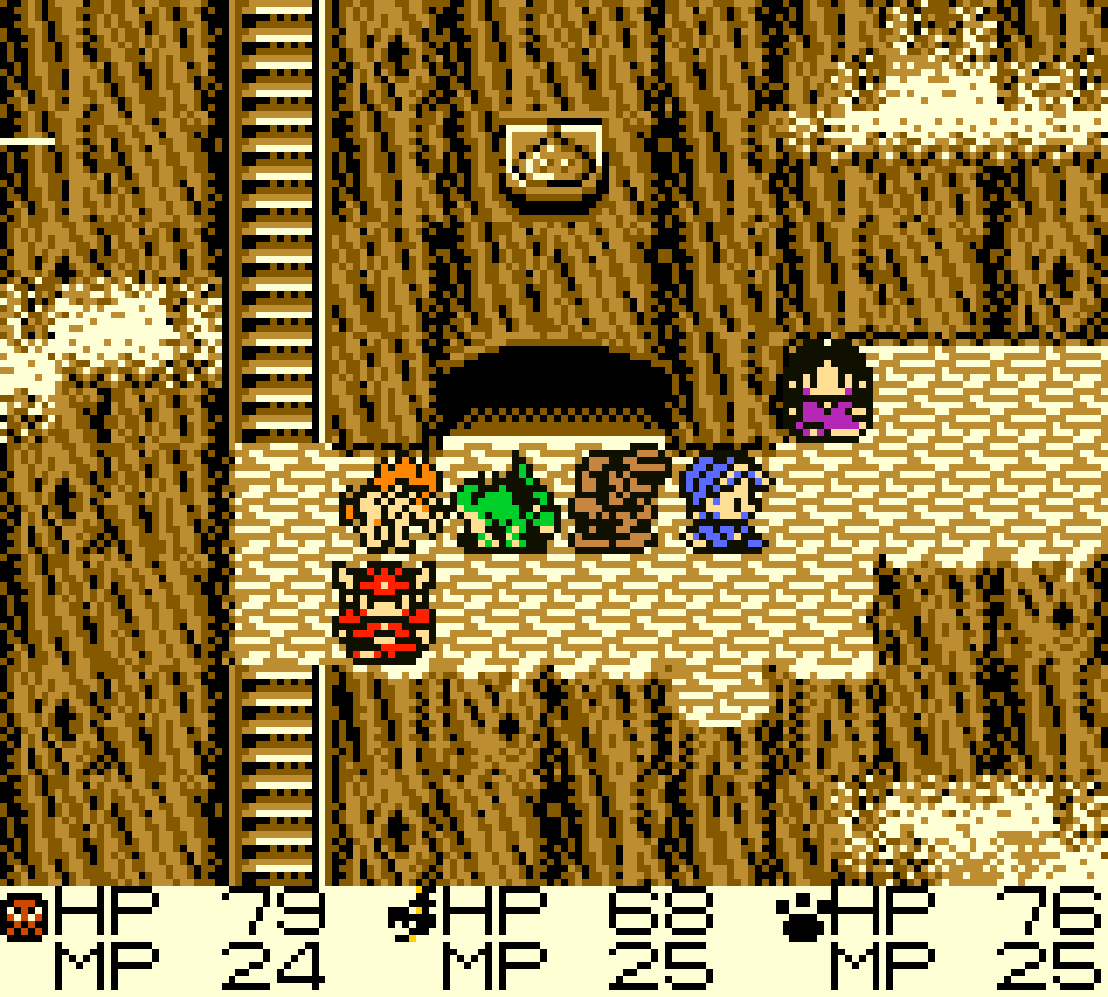

Design
Initially, we were designing a menu-only version where you receive orders by mail and choose familiars from a Pokemon-PC-like collection. Rose experimented with just how few pixels she could use to draw different familiars. In the end, we decided to drop the menu-only idea and let you actually play as a witch moving the familiars around a real shop. We thought it would be both more interesting to look at and to play - and more nostalgic to stick to the classic 16x16 sprite size.
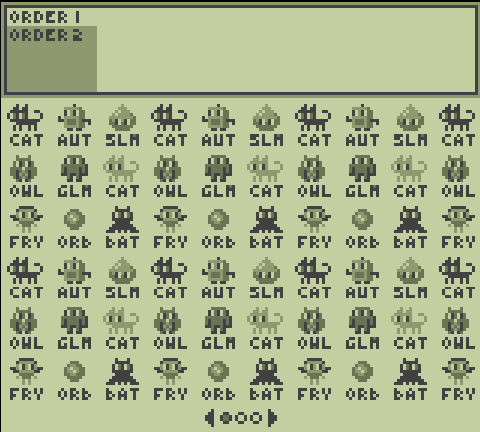
Celia got started brainstorming creatures that a witch or wizard might want as a familiar and all the qualities that customers could ask for. Rose worked on illustrating each as a 16x16 sprite using only 4 colors. We even stuck to the GameBoy technical limitation of only 3 colors per sprite (plus transparency) since it helps the familiar stand out more from each other. In the end, we had 30 different familiar types - including plenty of spooky ones to match the theme.

Development
We developed the game in Godot, which is perfect for game jams. This was Rose's second Godot project (after the even tinier Dimutive Dungeon) and Celia's first. We're still learning, but the speed at which you can put together gameplay functionality - and easily export it for web - in Godot has really impressed us!
By the halfway point of the jam, we had the basic familiar-shop gameplay working, though customers didn't yet have any specific requests. We had to fix some amusing bugs at this point - such as being able to pick up customers and being able to throw your familiars offscreen and never get them back.
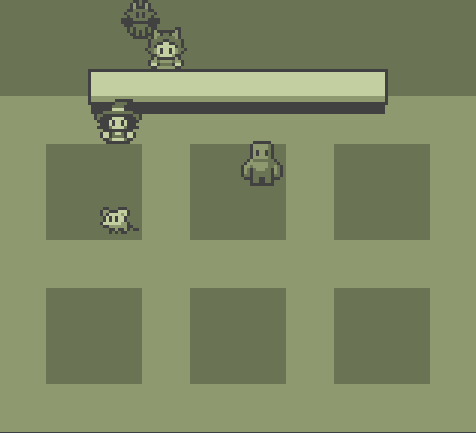
At first, we had a long list of qualities assigned to each familiar, but Celia's experiments with generating customer requests made us realize that multi-part requests over a smaller set of qualities would be more fun to solve than simple requests for highly specific qualities. The request system went through multiple iterations. We landed on one which attempts to generate a solvable request that's built from multiple requirements that each point at different familiars, hopefully making it interesting to narrow down to a single familiar.
Individual requests are solvable at the time they're generated - possibly by a familiar that another customer is waiting to trade. This can create fun chains, but can also lead to getting stuck, for example if two customers both want the same familiar. To get unstuck, we made sure that customers will eventually give up and leave if you don't give them the right familiar. It would be better if you couldn't get stuck at all, so improving the request system is top of our list for a post-jam update.
Polish
With the artwork for familiars and witches done, Rose focused on the background. The background had to look appealing and establish the setting of a familiar shop. We set up different areas which you could use to organize your familiars if you wanted to, such as putting the spooky ones in the spooky forest. Just for fun, there are number of fun spots for familiars to sit, such as on the couch, on a lily pad, or even in the witch's cauldron!
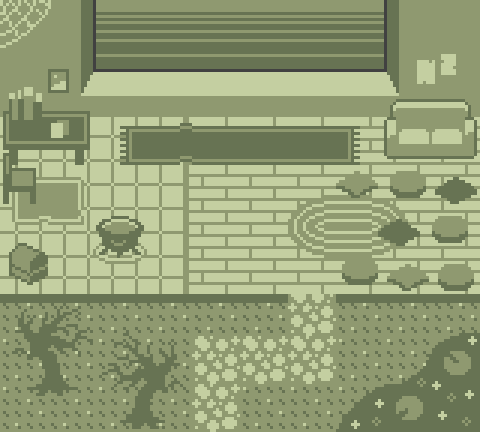
Celia was busy refining the request system and adding dialogue for the customers. Familiars' qualities are a mix of ones you can see in the info screen and some that are more subjective - like a customer might want a familiar that "looks spooky". We hope those are intuitive, but we made sure that customers explain why they're rejecting a particular familiar in case it's not clear.
One of the final steps was to choose a color scheme for the game. Classic green was the most nostalgic, but an original color scheme would stand out. Contrasting colors made the familiars look distinct, but bright colors made the background too intense.
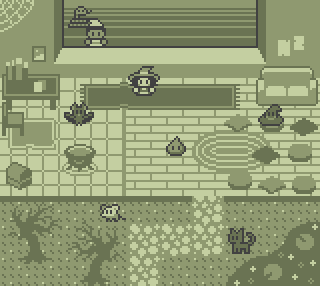
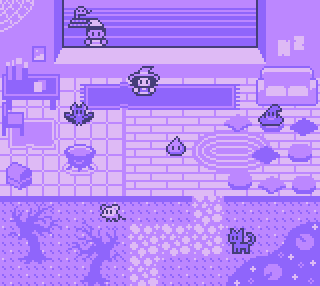

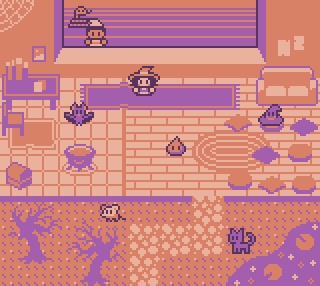
After lots of experimentation, we landed on purple and orange: distinct, not too bright, and very Halloween-y.
Conclusion
It's been great seeing players' reactions to the game. A common point of feedback is that it's unclear that you can examine familiars with the B button. If we had identified this point of confusion earlier, we could have adjusted the button scheme or in-game tutorial so that players don't miss out on part of the game. There are lots of other elements we just ran out of time for, including an in-game "Pokedex" for tracking familiars and any sort of sound or music.
Still, we had a great time working on it and are happy with the resulting game. Godot is the perfect game engine for a small game like this, and drawing nostalgic pixel art is always a joy. If you've played the game, we hope you enjoyed it!
Hilda's Familiars
Pick the perfect magical companions for your customers
More posts
- Hilda's Familiars Post-Jam UpdateOct 31, 2024
Comments
Log in with itch.io to leave a comment.
Thanks for the Devlog!